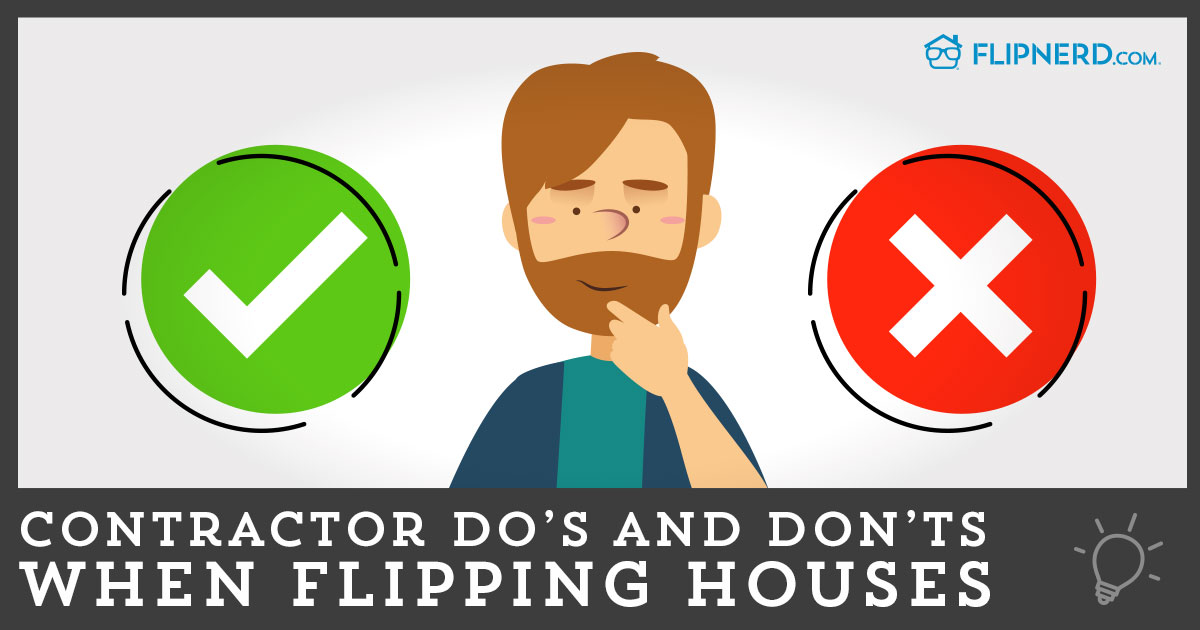Rental properties can be an excellent source of cash flow for real estate investors, especially as you ramp up your business and have a good amount of rental properties (set goals for how many rental properties you want to own and work up to it).
These properties can take up a decent amount of your time if you’re the main one handling placing tenants, managing the property, and ensuring that rents are paid on time. Even with a small team, this is a good deal of work.
The alternative is hiring the job out to a property management company that will, on average, charge 10%. This takes out of your profit, and let’s face it, sometimes you need that extra 10% in your pocket and the extra work doesn’t bother you.
If you are going to be the landlord for your own rental properties, there are definitely some mistakes that others have made that we in no way want you to encounter. Even before you purchase the property, there are mistakes that you can make and if you buy a property too high, you’re setting yourself up for an uphill battle of making the numbers work each month.
There’s profit to be made in rental properties, if you do it right.
Not Buying at the Right Price
Starting at the beginning, you HAVE to buy the property at a price that will make you money. Know market averages for rent for similar properties (sq. ft., location, condition, # of garages, etc.) and calculate your cost vs. your profit for each month.
Also, give yourself a good buffer to account for vacancies and non-payments (leading to evictions).
If you buy too high, you’re going to have the challenge of whether to raise your rent price or not have much cash flow each month. Not to mention repairs that might need to be done, there are lots of issues that can arise and cause you to have negative cash flow some months.
Pricing Your Rent Higher than Market Average
We mentioned this above but renters are going to do their research and know fair rent cost for the product they’re looking for. If your property is $100 more a month than the next comparable, they’re going to choose your competition every single time. Unless the property has some outstanding features (pool, close to a highly rated school, recently rehabbed), there’s no reason for renters to choose your property.
Rehabbing Too Much
So you bought the property at the right price, but it is in desperate need of some updates. Do your research to determine what other homes in the area have (stainless steel appliances, types of countertops, types of flooring, etc.) and make sure not to go overboard on your rehab. Give enough appeal that your tenants will enjoy living there but not too much that it’s cutting deeply into your cash flow.
Basically, have it be nice enough that they think about your property first, above others, but that it isn’t causing their rent to go up too much (or cause your profit to go down). In addition, extensive rehabbing usually isn’t done while a tenant is living in the property so the more time it takes, the less you’re making because it’s vacant.
Being Too Slow
This is overall in your business. Being slow to respond to phone calls, emails, maintenance issues, rehabs, decision making, turnaround between tenants, etc. all add up to your business not thriving. In the beginning, getting the property “rent-ready” should be done efficiently as opposed to leisurely.
If something needs to be fixed, get it done quick so that the tenants are happy (if occupied).
When answering phone calls and emails, if you don’t respond immediately, potential tenants will have already moved on to someone else and if they’re your current tenants, they’ll be wondering if someone else could treat them better.
Not Performing Due Diligence
Background checks are a MUST!
Always get check their credit, their eviction history, criminal background, and bankruptcy history before placing a tenant. Red flags can expose you to unstable tenants who won’t be able to keep their lease and increases your risk of vacancy.
Have a policy for this, which we’ll explain more in the next section.
Not Having Policies in Place
Have a firm set a company policy in place and most importantly, stick to them!
These policies should cover:
- Application process
- Security deposits
- Tenant screening
- Evictions
- Pet policies
- …and more
If you have them written down and enforce them, you’re not only protecting yourself and your business, but you’re saving yourself time since they’re specific and non-negotiable.
All-in-all, don’t set yourself up for failure by putting roadblocks in your way. From before the deal is made to planning ahead for the next tenant, have your strategy planned out. Know what you need to buy the property at along with how much you should charge for rent each month.
Be aware of other rental properties around and watch changes they make. Is their rent going up? Are their properties being leased quicker and more often than yours? Be aware and be ready to make changes as the market fluctuates.
Once you have a good handle on one property, consider expanding and building up your rental portfolio. If the property management gets to be too much, there are always property management companies that can step in, for a fee, and help take a lot of time and stress off your plate.
Also, turn-key properties take a lot of the headache out of rentals and allow you to build up the amount on rentals you own in markets that are lucrative to rental property owners. You can have 1 or 100 properties outside of your normal investing area, many times with tenants already in place, and not have to deal with the headache of maintenance or management issues, yet you’re still receiving cash flow each month (that the property is occupied).
If you want more information on turn-key properties, feel free to visit http://passiverental.com/









